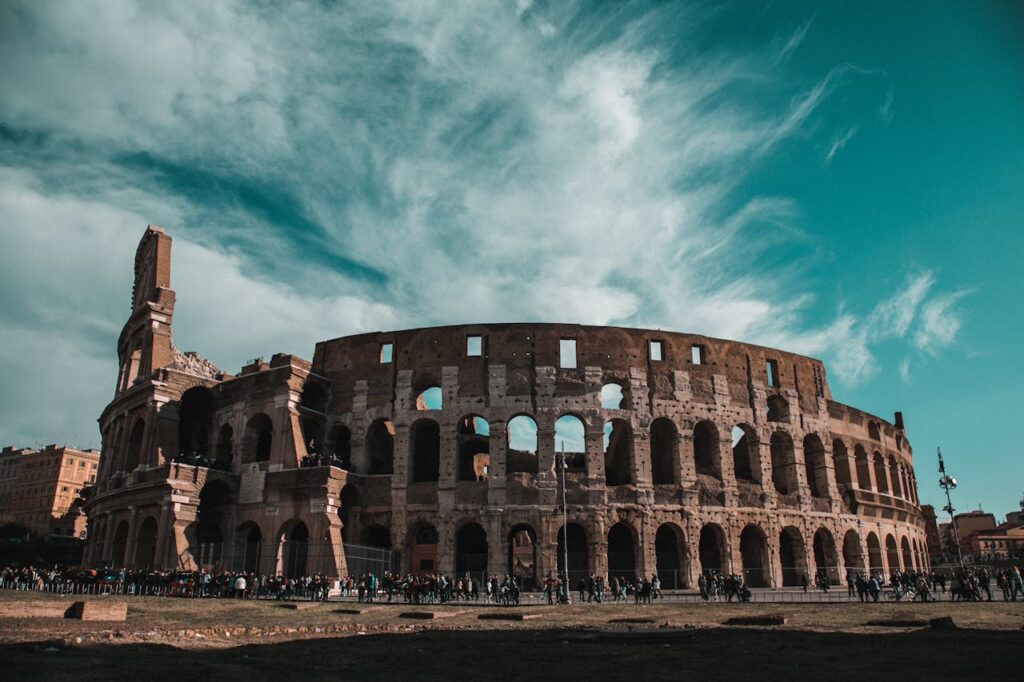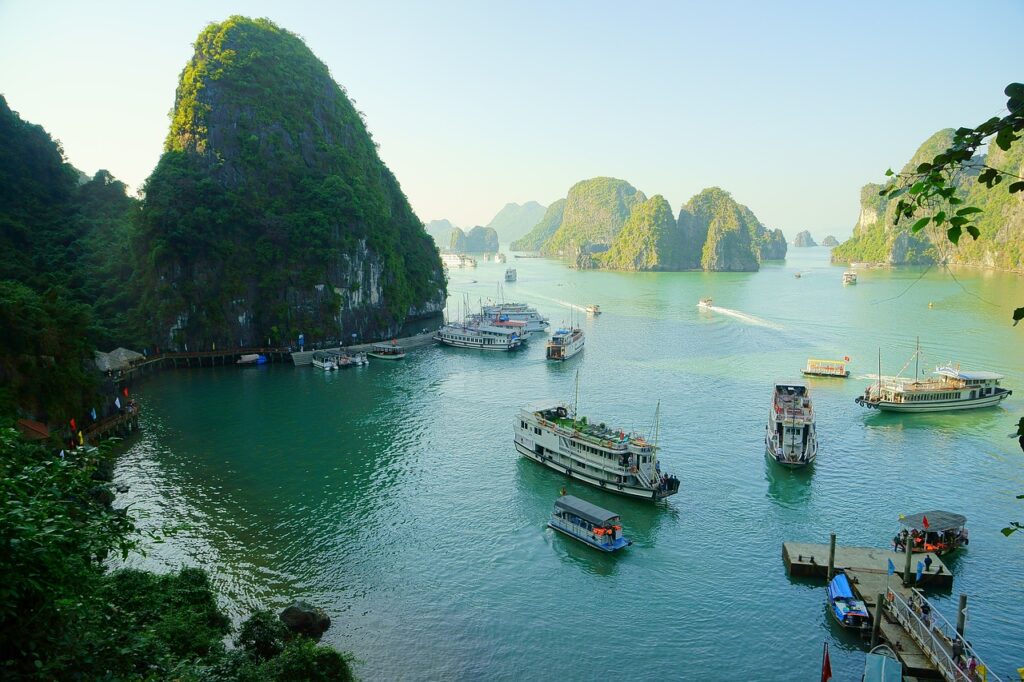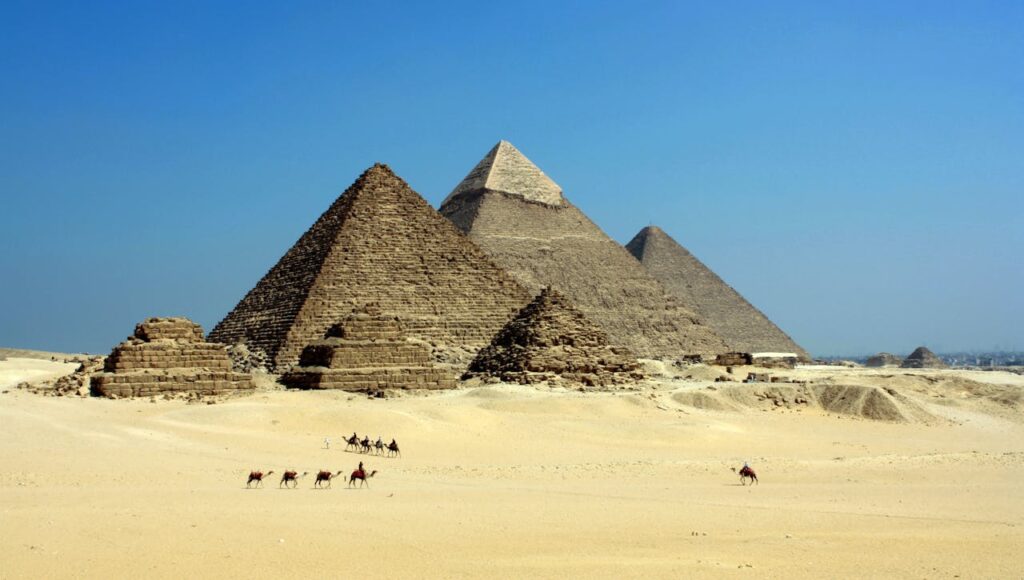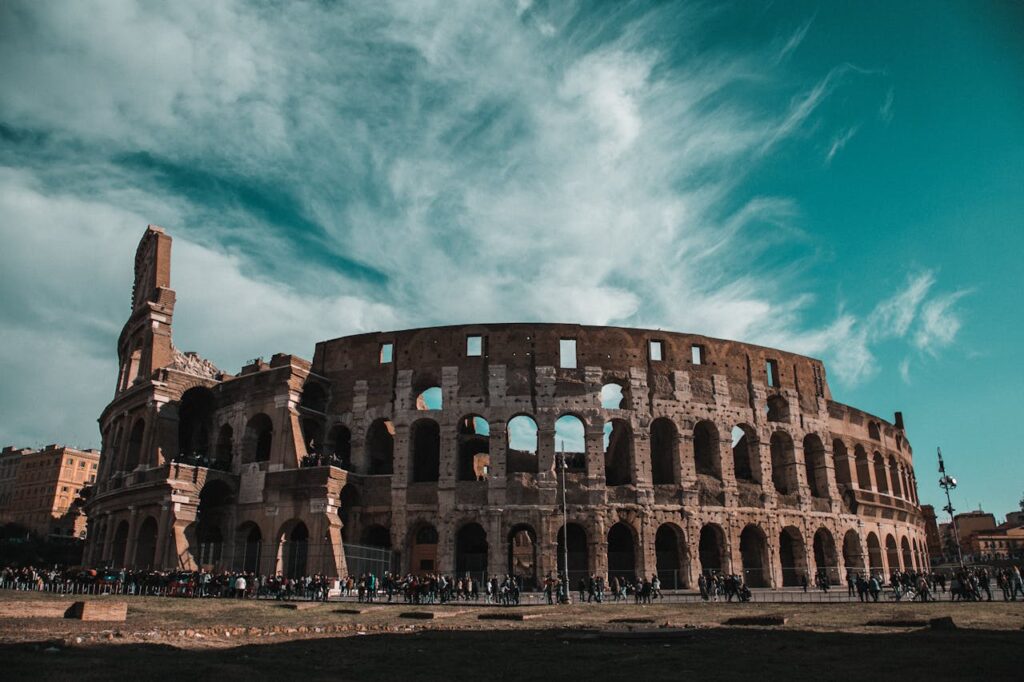Scattered across the Mediterranean, the remains of ancient theatres from the Greek and Roman world offer a fascinating glimpse into the cultural life of these ancient civilizations. Greek theatres were large, open-air structures built on the slopes of hills, while Roman theatres, though heavily influenced by Greek designs, were often built upon their own foundations and featured specific differences.
The concept of theatre originated in Athens, where it was used for festivals honoring the god Dionysus, featuring the famous Athenian tragedies, comedies, and satyr plays. The Romans, less philosophical in spirit, favored entertainment that provided more excitement and spectacle, including mime plays, acrobatics, animal fights, and gladiatorial contests—though the latter were more commonly held in amphitheatres.
Here are 15 of the best-preserved and most awe-inspiring ancient theatres of Greek and Roman antiquity.
1. Epidaurus: Greece’s Acoustical Marvel
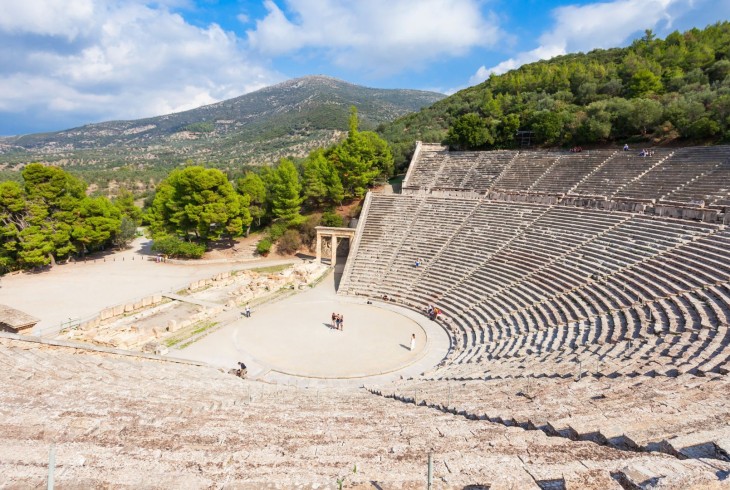
The Theatre of Epidaurus, located on the northeastern corner of the Peloponnesus in Greece, was constructed in the 4th century BC. It remains one of the most beautiful and best-preserved Greek theatres in the world. Unlike Roman theatres, the view of the lush landscape behind the stage is an integral part of the theatre’s design.
The theatre is renowned for its exceptional acoustics; even a whisper on stage can be heard clearly by all 14,000 spectators, regardless of where they are seated.
| Travel Information | Details |
|---|---|
| Location | Epidaurus, Greece |
| Capacity | 14,000 spectators |
| Construction Date | 4th century BC |
| Nearby Attractions | Sanctuary of Asklepios, Mycenae |
| Open Time | 8:00 AM |
| Close Time | 7:00 PM |
2. Bosra: Syria’s Best-Preserved Roman Theatre
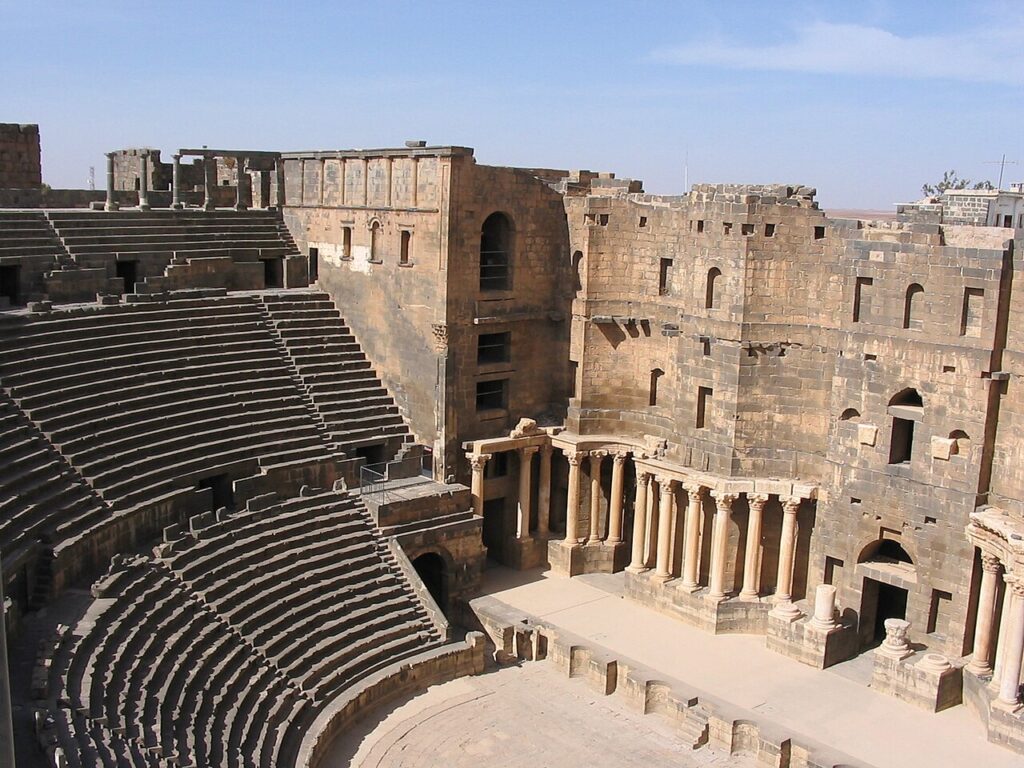
The Theatre of Bosra, located 140 km south of Damascus in Syria, is one of the best-preserved Roman theatres in the world. Built in the 2nd century AD, the theatre could seat up to 15,000 people. A fortress was later built around the theatre by the Ayyubids, which has helped to protect and preserve the structure.
| Travel Information | Details |
|---|---|
| Location | Bosra, Syria |
| Capacity | 15,000 spectators |
| Construction Date | 2nd century AD |
| Nearby Attractions | Bosra Citadel, Ancient City of Bosra |
| Open Time | 8:00 AM |
| Close Time | 5:00 PM |
3. Delphi Theatre: Greece’s Sacred Site
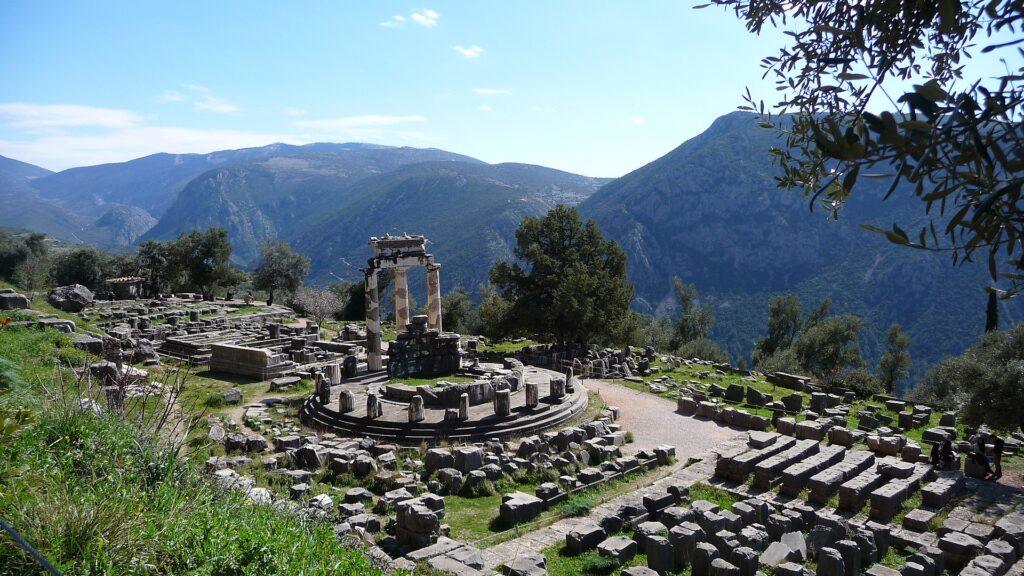
The Theatre of Delphi was built on a hill overlooking the sanctuary and oracle of Apollo, providing spectators with stunning views of the entire site and the surrounding landscape. Constructed in the 4th century BC, the theatre could seat 5,000 spectators and was an integral part of the religious and cultural life of ancient Greece.
| Travel Information | Details |
|---|---|
| Location | Delphi, Greece |
| Capacity | 5,000 spectators |
| Construction Date | 4th century BC |
| Nearby Attractions | Temple of Apollo, Delphi Archaeological Museum |
| Open Time | 8:00 AM |
| Close Time | 8:00 PM |
4. Aspendos Theatre: Turkey’s Best-Preserved Roman Theatre
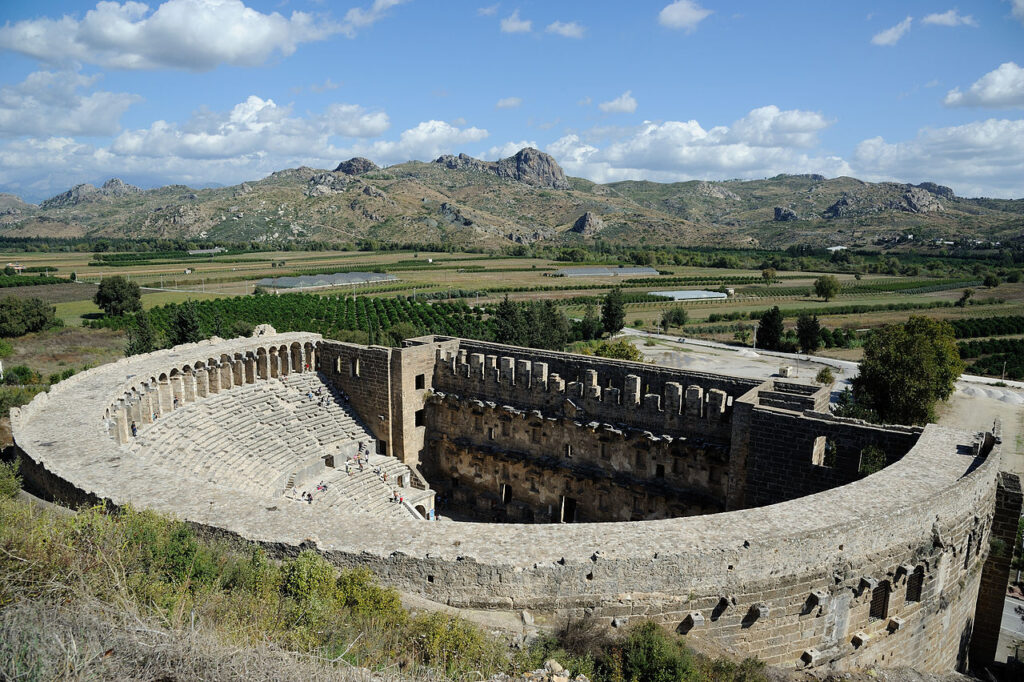
The Aspendos Theatre in southwestern Turkey is one of the best-preserved ancient theatres of antiquity. Built in 155 AD during the rule of Roman Emperor Marcus Aurelius, the theatre could seat between 15,000 and 20,000 spectators. The stage area was later used as a caravanserai during the Seljuk period, ensuring its continuous repair and maintenance.
| Travel Information | Details |
|---|---|
| Location | Aspendos, Turkey |
| Capacity | 15,000–20,000 spectators |
| Construction Date | 155 AD |
| Nearby Attractions | Aspendos Aqueduct, Perge |
| Open Time | 8:00 AM |
| Close Time | 7:00 PM |
5. Great Theatre of Ephesus: Turkey’s Grand Venue

The Great Theatre of Ephesus is one of the largest and most impressive ancient theatres in the world. Located on the west coast of Turkey, the theatre could hold up to 25,000 spectators. Initially used for drama, it later hosted gladiatorial fights during Roman times.
| Travel Information | Details |
|---|---|
| Location | Ephesus, Turkey |
| Capacity | 25,000 spectators |
| Construction Date | 3rd century BC |
| Nearby Attractions | Temple of Artemis, Ephesus Archaeological Site |
| Open Time | 8:00 AM |
| Close Time | 7:00 PM |
6. Roman Theatre of Orange: France’s Cultural Hub

The Roman Theatre of Orange, located in France, was built in the 1st century AD and is one of the best-preserved Roman theatres. After the decline of the Roman Empire, the theatre was closed by official edict in 391 AD due to the Church’s opposition to uncivilized spectacles. It was restored in the 19th century and is now home to the summer opera festival, the Chorégies d’Orange.
| Travel Information | Details |
|---|---|
| Location | Orange, France |
| Capacity | 9,000 spectators |
| Construction Date | 1st century AD |
| Nearby Attractions | Arc de Triomphe d’Orange, Orange Museum |
| Open Time | 9:00 AM |
| Close Time | 6:00 PM |
7. Theatre of Sabratha: Libya’s Coastal Wonder
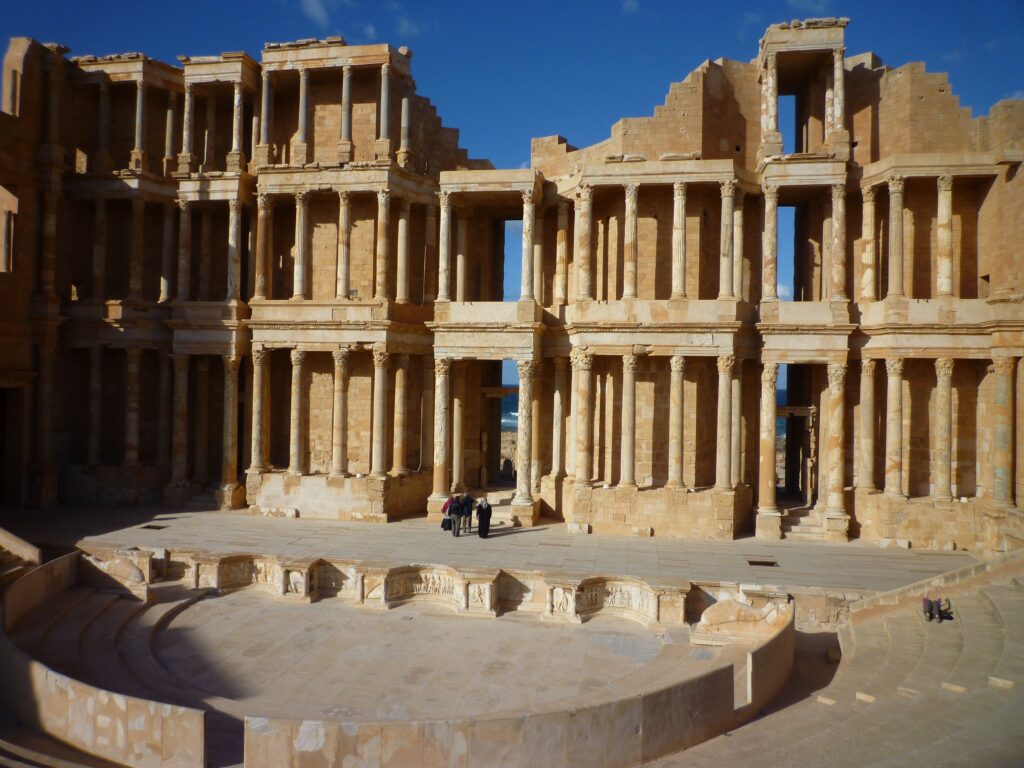
The Theatre of Sabratha in Libya was established around 500 BC as a Phoenician trading post and reached its peak under Roman rule as a coastal outlet for African products. The theatre, built in the 2nd century AD, appears largely intact due to reconstruction efforts by Italian archaeologists in the 1930s. The structure had 25 entrances and could seat approximately 5,000 spectators.
| Travel Information | Details |
|---|---|
| Location | Sabratha, Libya |
| Capacity | 5,000 spectators |
| Construction Date | 2nd century AD |
| Nearby Attractions | Sabratha Archaeological Site, Roman Baths |
| Open Time | 8:00 AM |
| Close Time | 5:00 PM |
8. Theatre of Side: Turkey’s Mediterranean Marvel

The Theatre of Side is a popular tourist attraction in southern Turkey, known for its impressive Roman ruins. Side was founded by Greek settlers in the 7th century BC and became part of the Roman province of Galatia in 25 BC. The theatre, which could seat between 15,000 and 20,000 people, remains in fairly good condition today.
| Travel Information | Details |
|---|---|
| Location | Side, Turkey |
| Capacity | 15,000–20,000 spectators |
| Construction Date | 2nd century AD |
| Nearby Attractions | Temple of Apollo, Side Museum |
| Open Time | 8:00 AM |
| Close Time | 7:00 PM |
9. Pergamum Theatre: Turkey’s Steep Spectacle
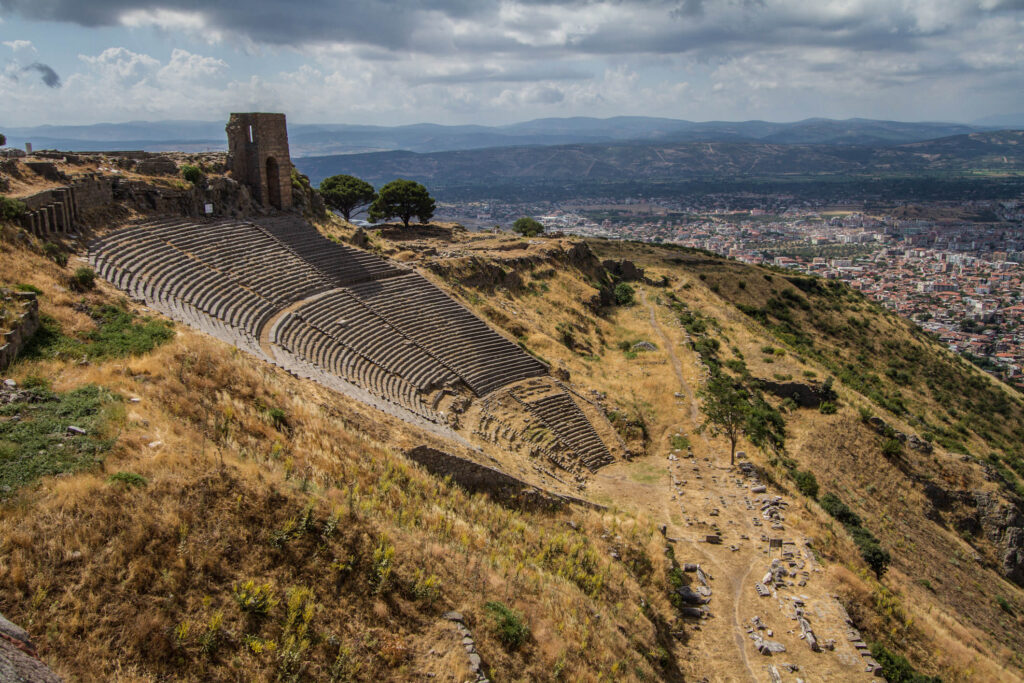
The Pergamum Theatre is one of the steepest ancient theatres in the world, capable of seating 10,000 spectators. Located in Pergamum, an ancient city founded by Greek colonists on the Aegean coast of Anatolia, the theatre was built in the 3rd century BC. The site, though lesser-known, contains several notable structures, including this impressive theatre.
| Travel Information | Details |
|---|---|
| Location | Pergamum, Turkey |
| Capacity | 10,000 spectators |
| Construction Date | 3rd century BC |
| Nearby Attractions | Pergamon Acropolis, Asclepion |
| Open Time | 8:00 AM |
| Close Time | 6:00 PM |
10. Roman Theatre of Amman: Jordan’s Historical Hub
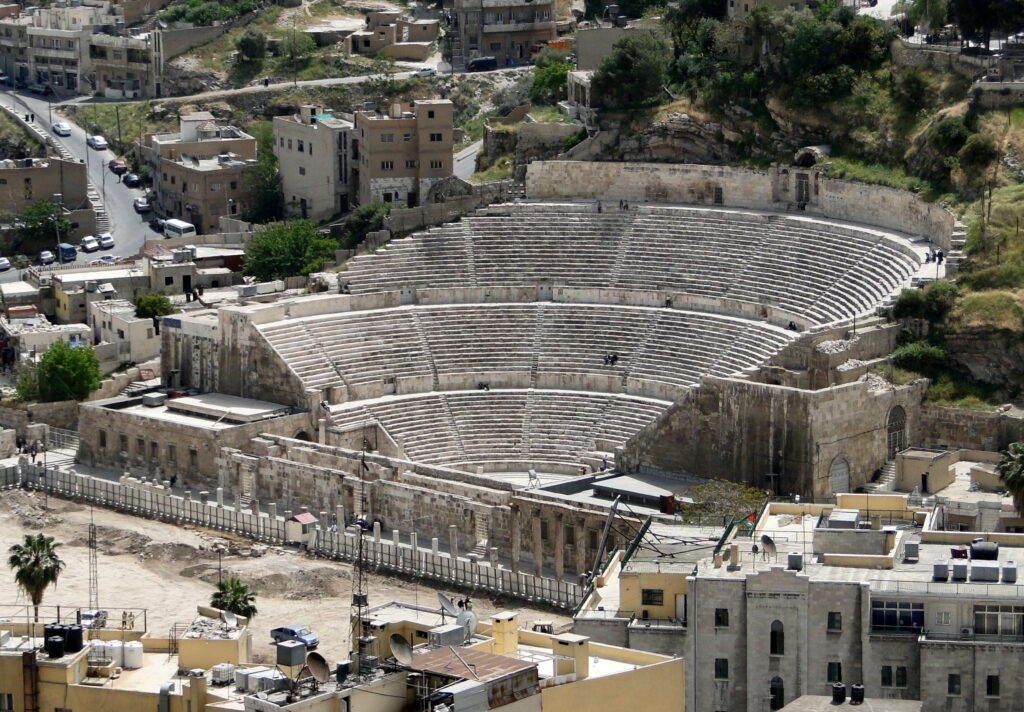
The Roman Theatre of Amman, built during the reign of Marcus Aurelius in the 2nd century AD, is one of Jordan’s most impressive ancient structures. The theatre, which could seat about 6,000 people, is cut into the hillside and oriented north to keep the sun off the spectators. It was built on three tiers, with the rulers sitting closest to the action, the military in the middle section, and the general public in the highest section.
| Travel Information | Details |
|---|---|
| Location | Amman, Jordan |
| Capacity | 6,000 spectators |
| Construction Date | 2nd century AD |
| Nearby Attractions | Citadel Hill, Amman Museum |
| Open Time | 8:00 AM |
| Close Time | 5:00 PM |
11. Roman Theatre of Merida: Spain’s Historical Gem
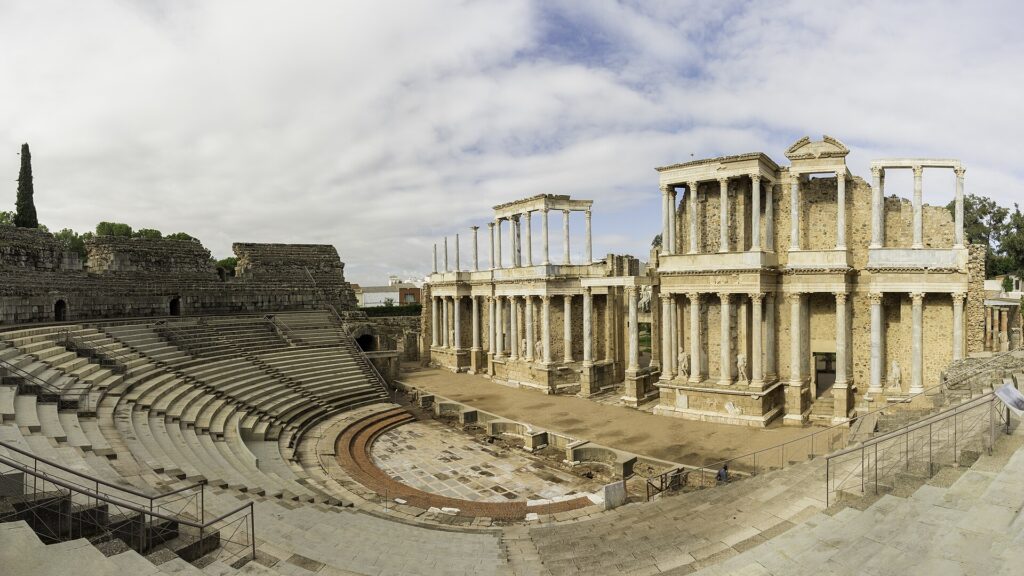
The Roman Theatre of Merida, located in present-day Spain, was built in 16 BC by order of Agrippa, a general and friend of Emperor Augustus. The theatre could house up to 6,000 spectators and underwent several restorations in later centuries, introducing new architectural elements and decorations. The structure was restored to its current state in the 1960s-1970s.
| Travel Information | Details |
|---|---|
| Location | Merida, Spain |
| Capacity | 6,000 spectators |
| Construction Date | 16 BC |
| Nearby Attractions | Roman Bridge, Merida Archaeological Museum |
| Open Time | 9:00 AM |
| Close Time | 8:00 PM |
12. Odeon of Herodes Atticus: Athens’ Cultural Venue
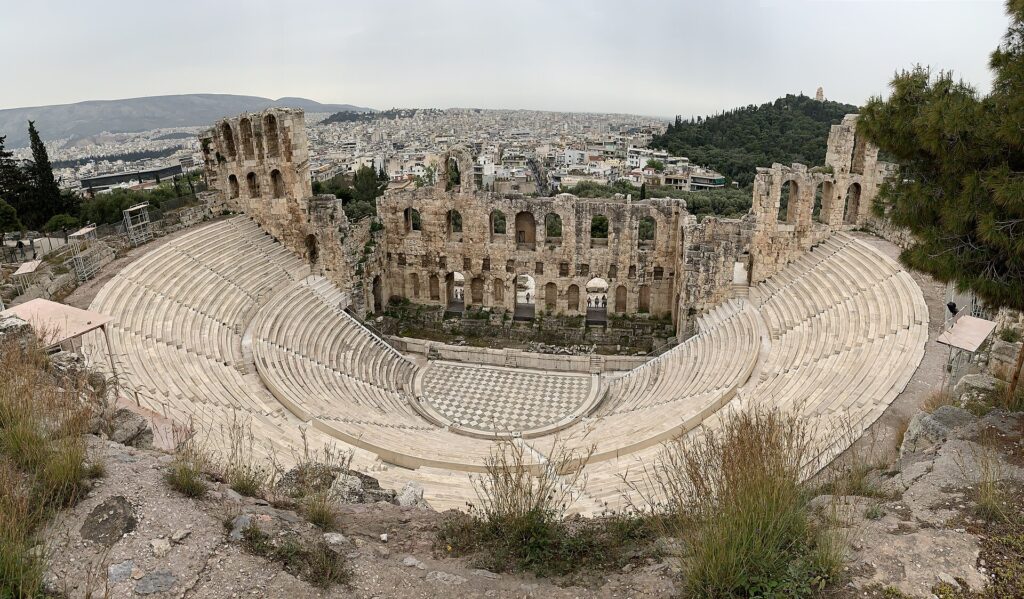
The Odeon of Herodes Atticus, located on the southern slope of the Acropolis in Athens, was built in 161 AD by Herodes Atticus in memory of his wife. This theatre was used for various plays and music concerts in ancient Athens and could seat up to 5,000 people. Originally, the structure had a wooden roof, and it continues to be used for performances today.
| Travel Information | Details |
|---|---|
| Location | Athens, Greece |
| Capacity | 5,000 spectators |
| Construction Date | 161 AD |
| Nearby Attractions | Acropolis, Parthenon |
| Open Time | 8:00 AM |
| Close Time | 8:00 PM |
13. Jerash Theatres: Jordan’s Twin Wonders
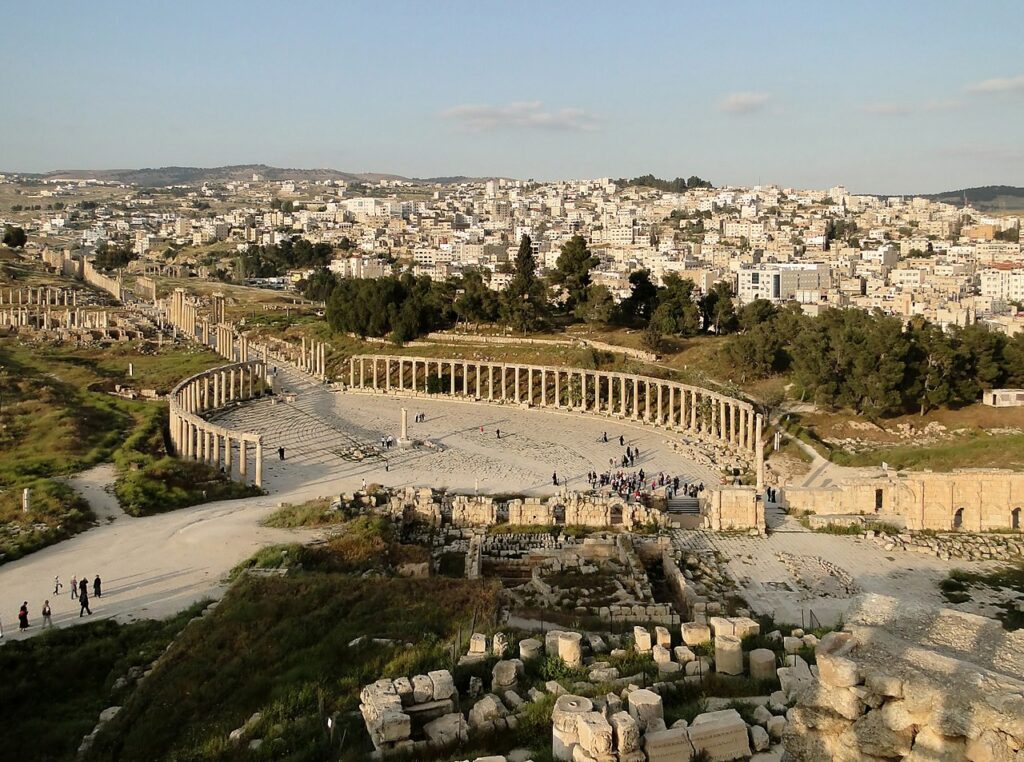
The ancient city of Jerash in Jordan is home to not one, but two Roman theatres. The North Theatre, built in 165 AD, could seat 1,600 people and was mainly used as the city council chamber. The larger South Theatre, built between 90-92 AD, could accommodate more than 3,000 spectators. Both theatres are part of one of the best-preserved Roman provincial towns in the world.
| Travel Information | Details |
|---|---|
| Location | Jerash, Jordan |
| Capacity | 1,600 (North Theatre), 3,000 (South Theatre) |
| Construction Date | 90-165 AD |
| Nearby Attractions | Jerash Archaeological Site, Temple of Artemis |
| Open Time | 8:00 AM |
| Close Time | 6:00 PM |
14. Greco-Roman Theatre of Taormina: Sicily’s Scenic Venue

The Greco-Roman Theatre of Taormina in Sicily was originally built by the Greeks in the 2nd century BC and later expanded by the Romans. This ancient theatre is beautifully situated, overlooking the bay of Naxos and Mount Etna. Today, it serves as the center of Taormina’s international film festival.
| Travel Information | Details |
|---|---|
| Location | Taormina, Sicily |
| Capacity | 5,000 spectators |
| Construction Date | 2nd century BC |
| Nearby Attractions | Mount Etna, Isola Bella |
| Open Time | 9:00 AM |
| Close Time | 7:00 PM |
15. Roman Theatre of Leptis Magna: Libya’s Ancient Gem
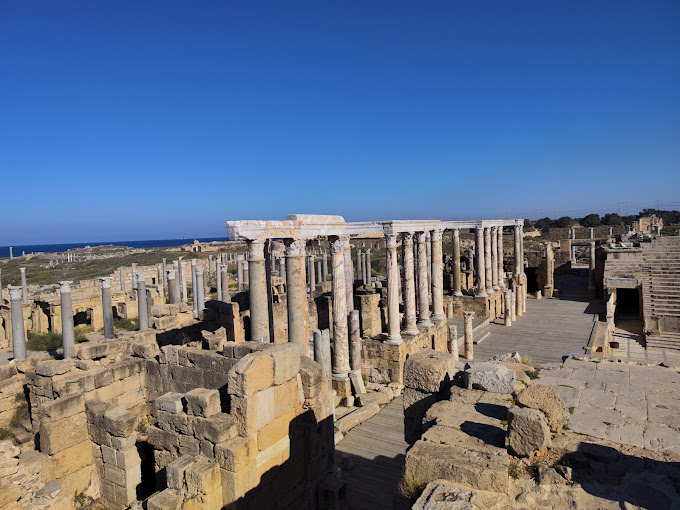
The Roman Theatre of Leptis Magna is one of the most impressive remnants of the ancient city of Leptis Magna in Libya. Founded by the Phoenicians in the 10th century BC, the city became part of the Roman Empire after the defeat of Carthage. The theatre, built in the 1st century AD, could seat approximately 16,000 spectators and is part of one of the most spectacular and unspoiled Roman ruins in the Mediterranean.
| Travel Information | Details |
|---|---|
| Location | Leptis Magna, Libya |
| Capacity | 16,000 spectators |
| Construction Date | 1st century AD |
| Nearby Attractions | Leptis Magna Ruins, Sabratha |
| Open Time | 8:00 AM |
| Close Time | 5:00 PM |
Explore 15 of the most amazing ancient theatres from Greek and Roman antiquity, including Epidaurus, the Great Theatre of Ephesus, and the Roman Theatre of Leptis Magna. Discover the history, architectural marvels, and travel tips for visiting these iconic sites.

